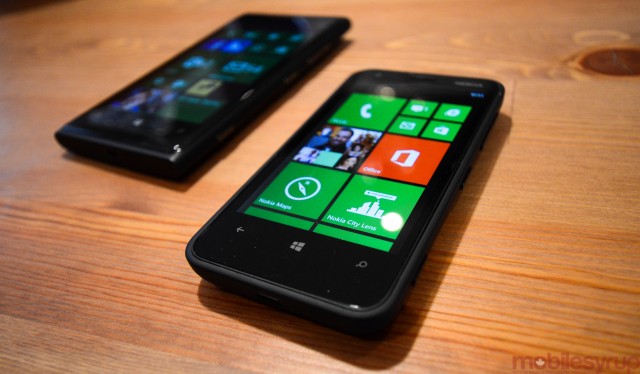
Nokia is frustrated, and rightfully so.
Here they are, dishing out gorgeous handset after gorgeous handset, while the world sits by and (for the most part) ignores them. Or, they chime, “put Android on it and we’ll give it a look!” It’s unfair, and largely not their fault. They are beholden to Microsoft, the developers of Windows Phone 8, and the army of developers also (for the most part) ignoring the platform.
Nokia would never come out and say this, of course, but there is publicly available evidence of this sentiment, and the ample incongruity of a company that does not control the operating system on which its hardware is based is likely a naturally-occurring feeling (provided one believes corporations can feel).
One Nokia vice president, Bryan Biniak, has been more vocal than some execs at the company, telling International Business Times, “To give you a reason to switch, I need to make sure the apps that you care about on your device are not only on our phones, but are better.” While it’s true that Windows Phone itself lacks some of the features we take for granted on iOS and Android, namely a unified notification centre, extensible multitasking, and quick access to settings, it’s mainly the lack of top tier apps that is hurting Nokia, and the entire Windows Phone ecosystem, the most.
Nokia’s relatively disappointing recent quarterly earnings revealed they had sold 7.6 million Lumia devices, but fewer than 7% of them were sold in North America, the kingpin of smartphone regions and the place in which Nokia needs to succeed most. Biniak promises things will get better: “People will be hard-pressed to say ‘[Windows Phone] doesn’t have this app’ and it makes a material difference. I don’t think there will be any [app developers] we don’t have commercial agreements with, and so maybe it’s not published by the end of the year but it will be published before the end of [March].” Eight months is a long time to wait, but Nokia also needs Microsoft to take the reins and iterate Windows Phone more quickly.
“It’s not just about the hardware, it’s about the tools that are on the hardware. You can’t sell a phone without the apps, you just can’t,” continues Biniak, and Nokia can only do so much to incentivize developers to come to the platform. The apps need to be there for people to buy the hardware, but the hardware needs to be compelling enough for people to spend money on the apps. It’s a constant struggle.
Equally important to the apps that aren’t there are the ones that are, since often they are updated infrequently, and lack features when compared to their iOS or Android equivalents. And despite the presence of hundreds of excellent third-party alternatives — Instagram and Dropbox come to mind — they’re still not fully-featured and lack the polish of their official counterparts.
Nokia has been working incredibly hard to bring great content, often exclusively, to Windows Phone. Partnerships with ESPN, the PGA Tour, PayPal, Hipstamatic, and later this year, Flipboard, Path and Vine, should bring some much-needed flavour to the Windows Phone Store. But until Microsoft releases the anticipated follow-up to Windows Phone 8, referred to internally as ‘Blue’, the underlying operating system will continue to lack many of the compelling features users take for granted in iOS and Android. With iOS 7 being released in a few short months, and Android’s latest just debuting, it’s going to take a lot more than a notification centre to convince users to switch.
Source: IBTimes
MobileSyrup may earn a commission from purchases made via our links, which helps fund the journalism we provide free on our website. These links do not influence our editorial content. Support us here.


